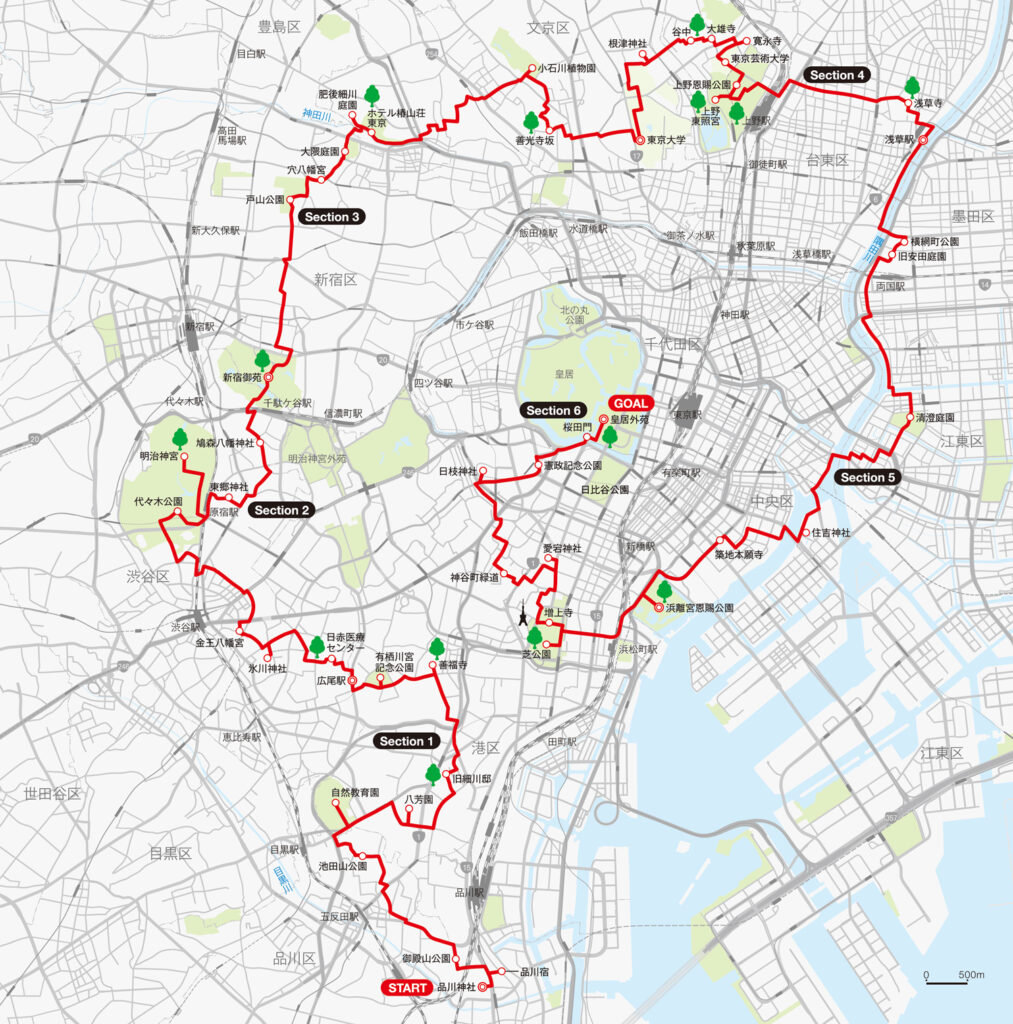First impressions of Tokyo’s vast urban landscape can be overwhelming, often filled with a stereotypical view of the most populated city on earth. But beyond the bright lights, concrete and relentless sounds there’s a green side to the metropolis many have never experienced.
In an attempt to rediscover Tokyo’s green spaces and its trees. Lucas Badtke- Berkow and his wife Kaori, editors of Japanese travel and lifestyle magazine ‘Papersky’, meticulously planned a trail over six months of research and discovery through Tokyo’s unique and ancient trees to reflect its deep cultural history.
The route literally spirals through the city on a 60km course, passing through some of the busiest areas yet remaining calm. Avoiding busy roads where possible, opting for quieter, more idiosyncratic backstreets. The course’s six sections are open to be cycled, hiked or run and can be explored over as many days as you like or dipped into for a single stage depending on how much of Tokyo’s historic and gastronomic culture you want to sample.
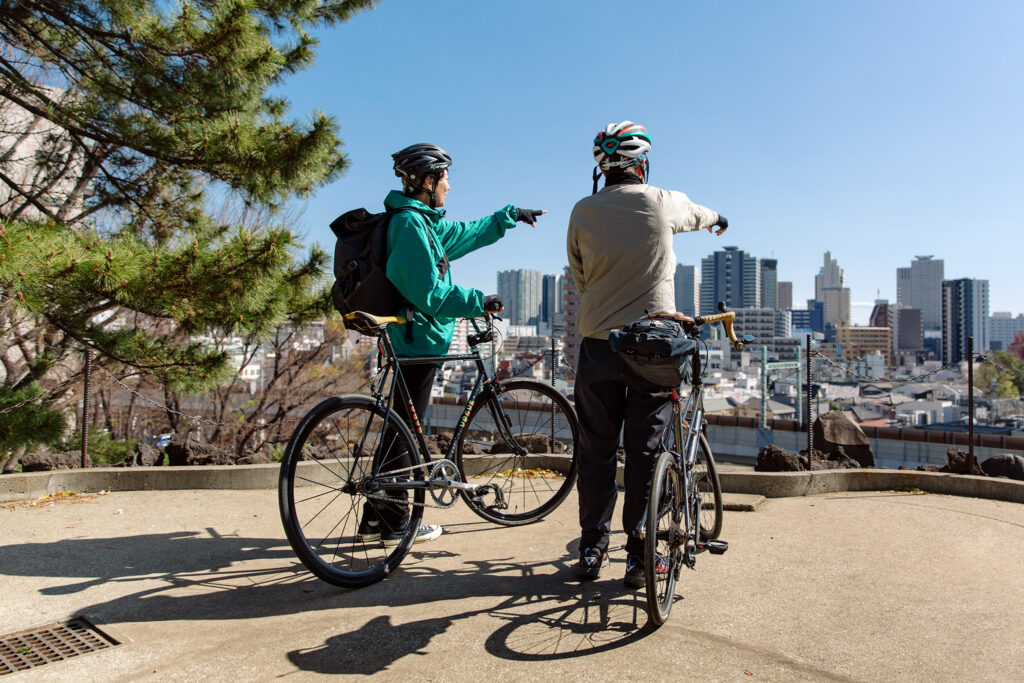
Kita Shinagawa to Shinjuku Gyoen
Our starting point, Shinagawa Shrine (c.1187) is a peaceful tree filled enclave, a world away from the busy road below. There’s a unique view spanning Kita-Shinagawa all the way to Odaiba after a 15m ascent up Fujizuka the imitation Mt. Fuji, created in 1869 with lava rocks for worshipers without strength or money to climb the actual mountain. The route travels along the old shopping street that formed part of the original Tokaido Road, once the busiest gateway between Kyoto and Edo, with some stores dating back many generations. Along this street are Japanese pines donated from across the country amongst small local stores like Iseya where we stopped for homemade snacks and a variety of onigiri to fuel our journey.
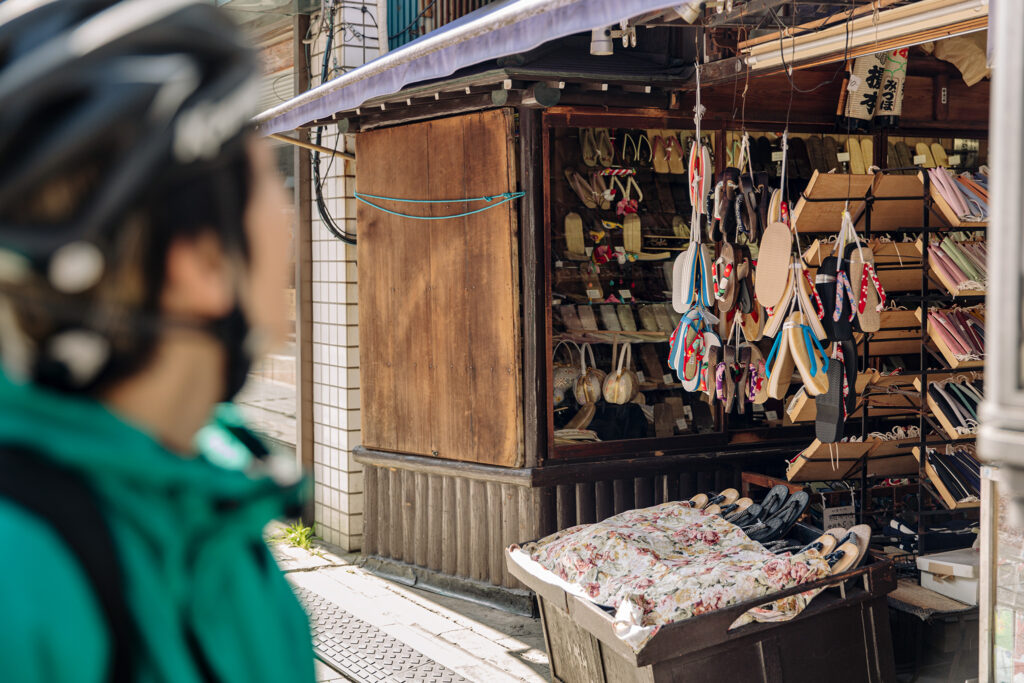
Heading towards Gotanda there’s a short climb as we pass Gotenyama Garden, a historic area for cherry blossoms, seasonal trees and the soundtrack provided by its waterfalls. A couple of kilometers further on is Ikedayama Park, located at the crest of another climb. A largely unknown oasis once belonging to a noble family, this large Japanese garden is full of native flora, koi filled ponds and pathways between trees, a perfectly tranquil space to spend some time.
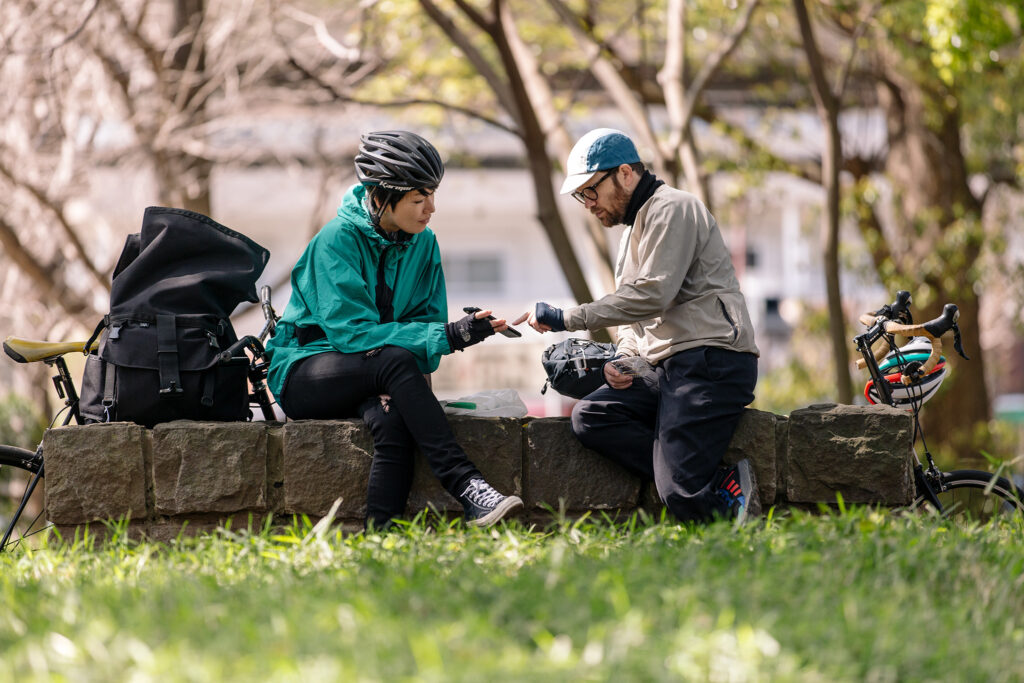
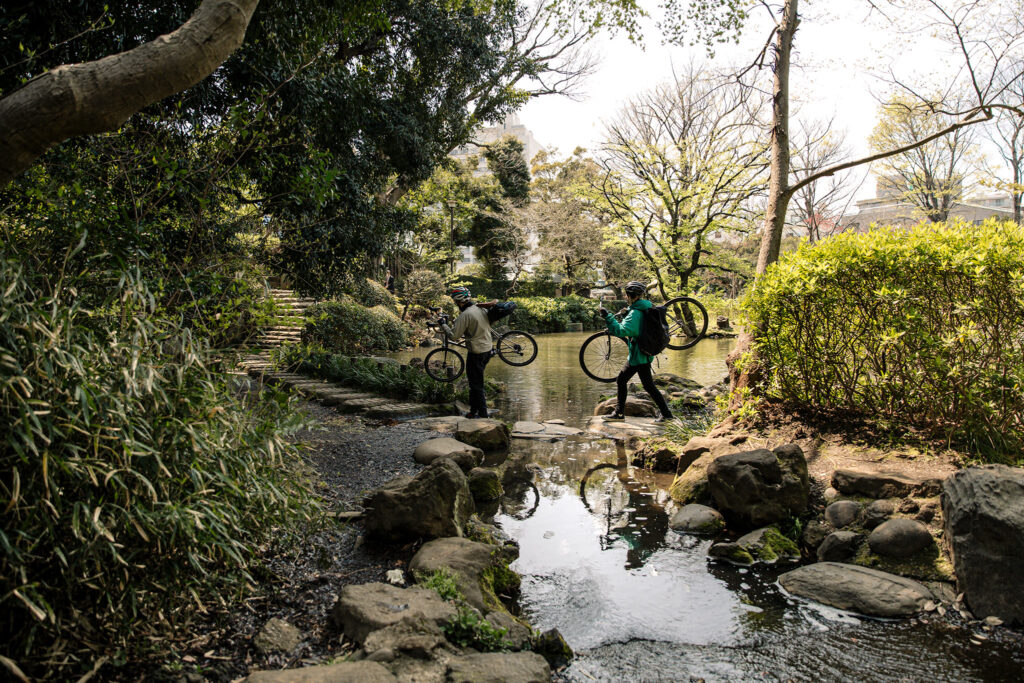
The relatively quiet backroads continue north-west towards affluent Shirokanedai and the National Institute for Nature Study, a 200,000 hectare botanical garden once home to Matsudaira Yorishige, feudal lord of the Takamatsu’s. With its natural trails and marshes rather than lawns and concrete, this lush nature preserve is a very special place that feels like a wild forest hidden within the city. Created to protect the natural wildlife of the region it provides an insight into how this area looked many hundreds of years ago. Among the vast numbers of trees and rare species is a 400-year-old chinquapin and the enormous 350-year-old Fabled Pine. A little further on are Happoen’s small but beautiful gardens, home to bonsai trees more than 500 years old. There’s an organic café here operating a farm to table menu with vegetables from Kosaka Farm, in the Tokyo suburb of Kokubunji.
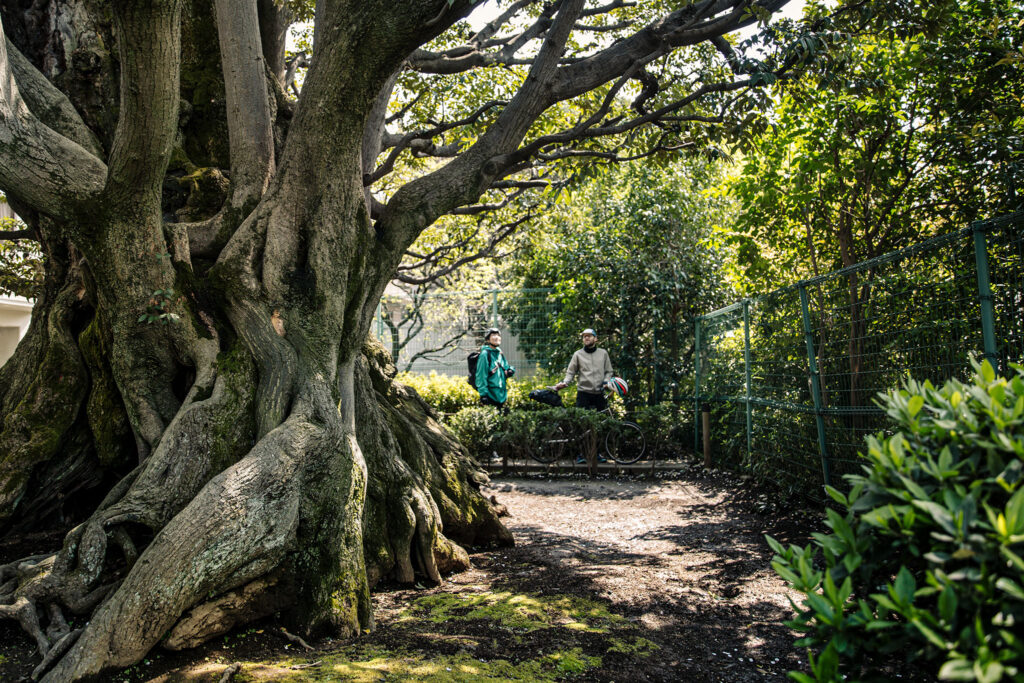
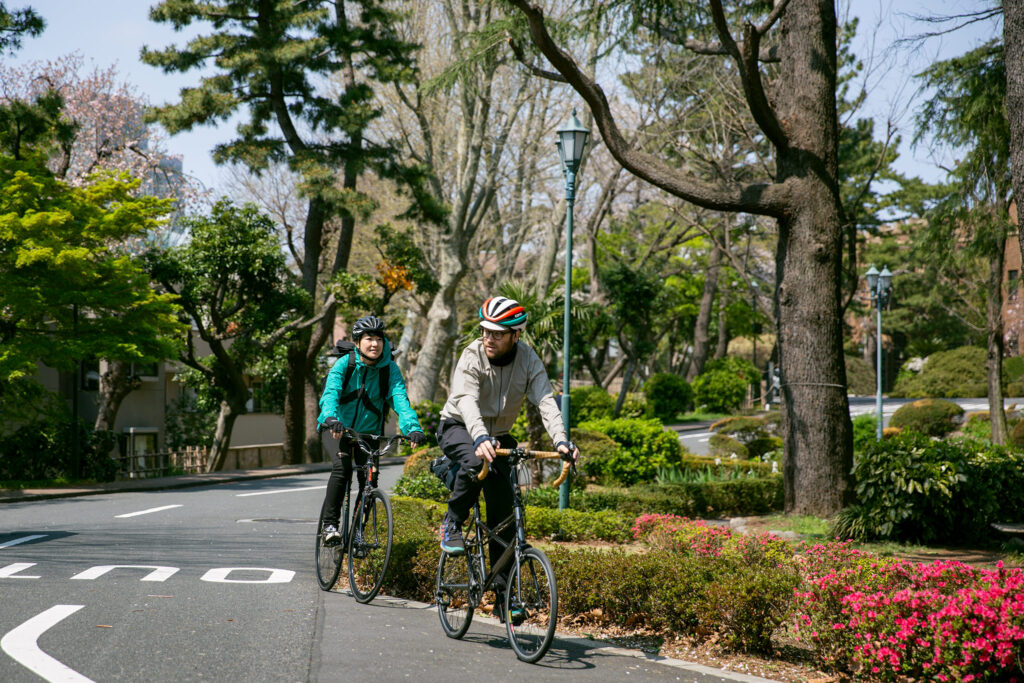
Leaving these tranquil gardens we pass the neo-gothic Memorial Hall of Meji University, then its a 3 km ride through Nihonenoki-dori before turning left at the Takanawa Fire Station and its lighthouse like watchtower, through a combination of roads before we find a huge chinquapin tree with a bloody history when 17 Ronin committed seppuku in the infamous Akō incident.
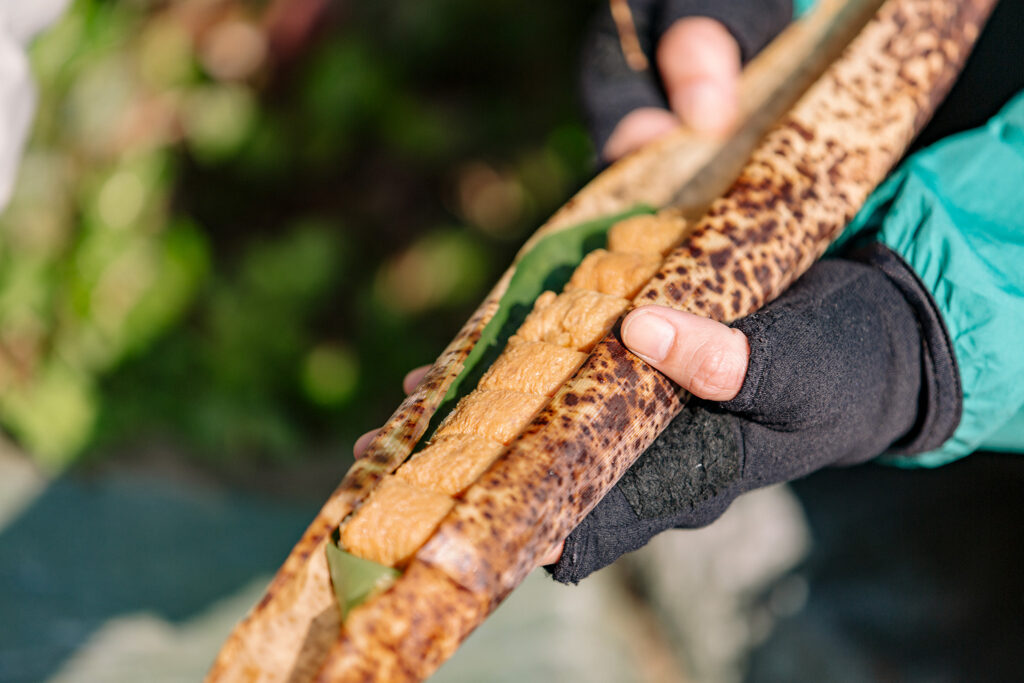
Along the way we make a brief stop at Kojiro, a tiny store specializing in a single product, possibly the best Inari-Zushi in Tokyo, beautifully wrapped in bamboo and perfect for carrying. After navigating some intricate side streets and a small climb lined with cherry blossom we arrive at Azabusan Zenpukuji (824 AD) and Tokyo’s oldest tree, a giant 800 year old ginkgo. The next point is the expansive Arisagawa Park alongside the German Embassy, its dense green woodland naturally follows the contours of the Azabu landscape with hills, valleys, and ponds filled with koi and turtles. A perfect location for lunch is Les Grands Arbres, a nearby café with a treehouse you can climb from the street.
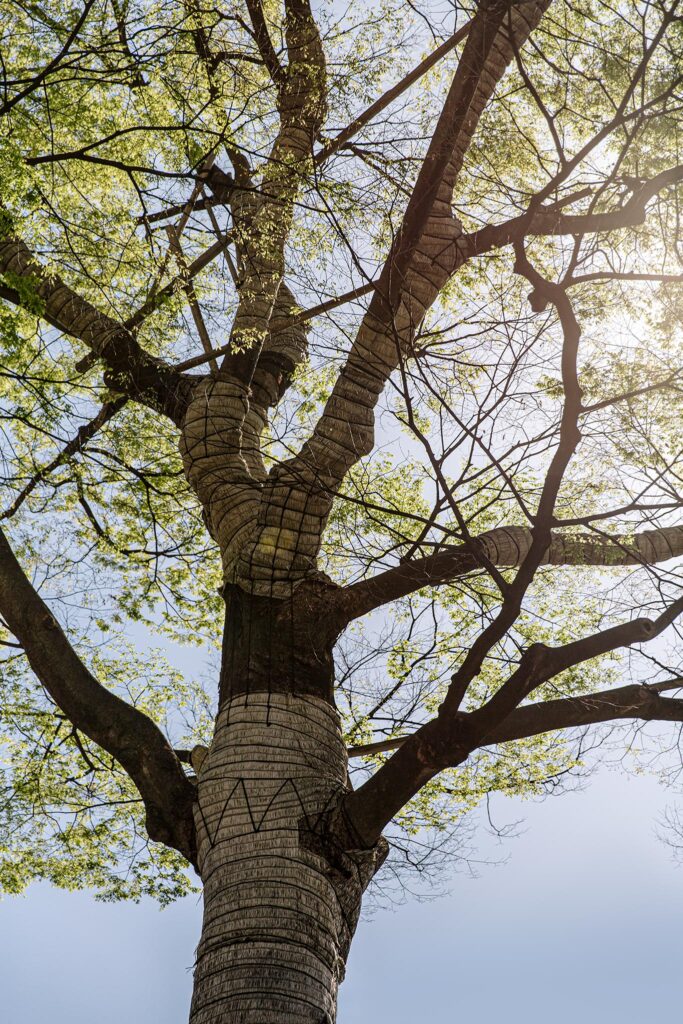
From Hiroo we head north along Gaien nishi-dori before forking left to more secluded roads and a climb which takes us to the Red Cross Hospital and a 300 year old red pine which appears in the story of Sakura Sōgorō and the peasant revolt in Sakura Giminden. Keeping off the main roads from here passing through Kokugakuin University,navigating the back roads of Shibuya to find Hikawa Shrine among a small but dense forest of stunning sycamore, zelkova and bamboo. There’s a lot of history here, including an outdoor sumo ring we pass navigating the steps down towards the street.
The route continues through more backstreets and a different view of this area, quieter places where people live alongside the jungle of modern high-rises. Nearby is Konnoh-Hachimangu Shrine, the birthplace of Shibuya 920 years ago, reached by climbing a series of stairs leading to a variety of ancient trees, including the rare Konnoh-Zakura cherry tree planted in the 1600’s, now a national monument.
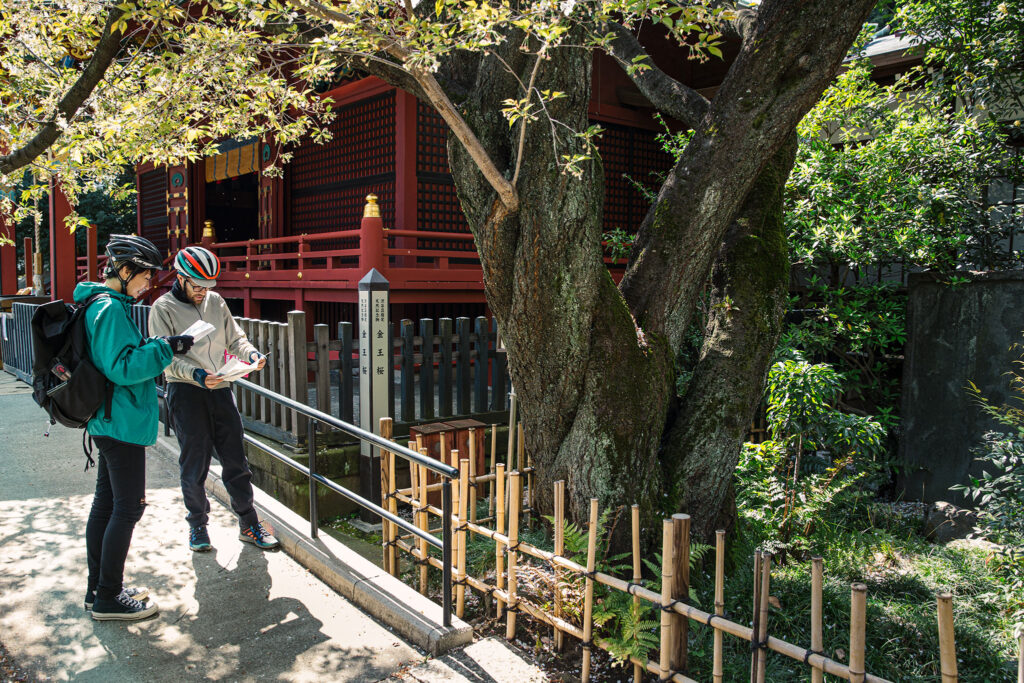
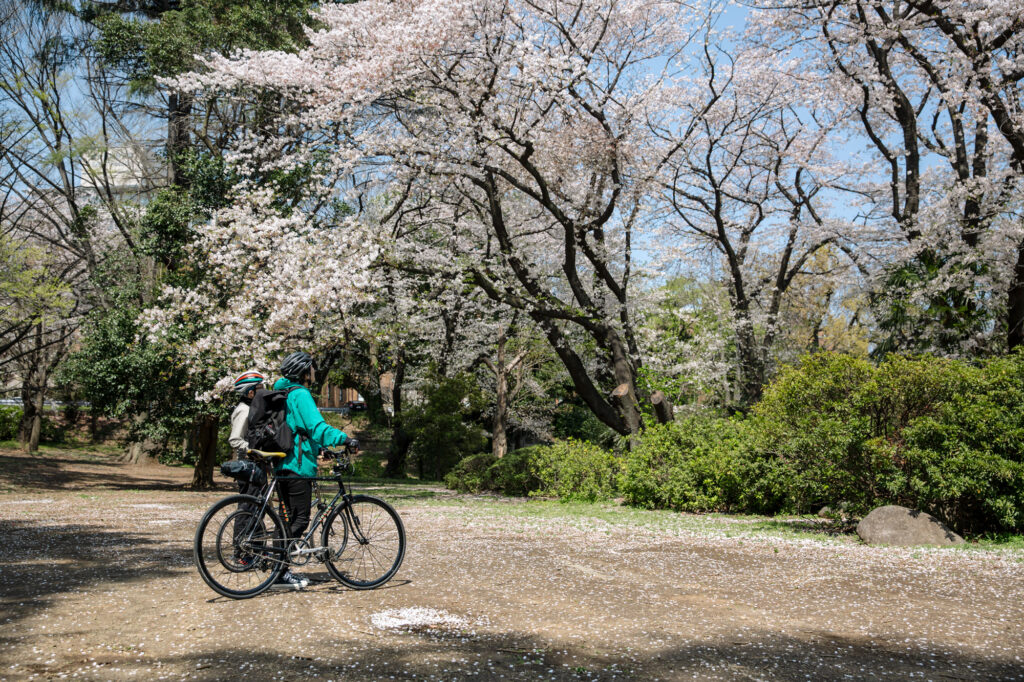
We pass Kenzo Tange’s Yoyogi Gymnasium before the sprawling maze-like paths of Yoyogi Park lead us towards Meiji-Jingu. Founded in 1920, the forest covers a huge area with 120,000 trees and 365 different species donated from across Japan when the shrine was established. Planting trees suited to the local climate enabled the forest to thrive without human intervention, reaching maturity only recently.
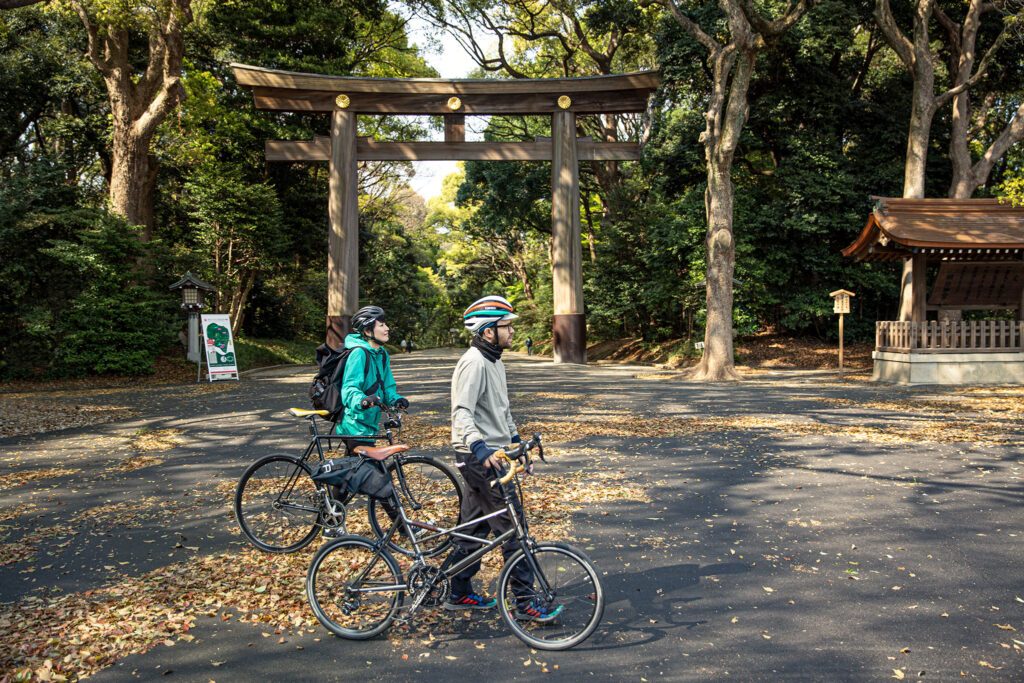
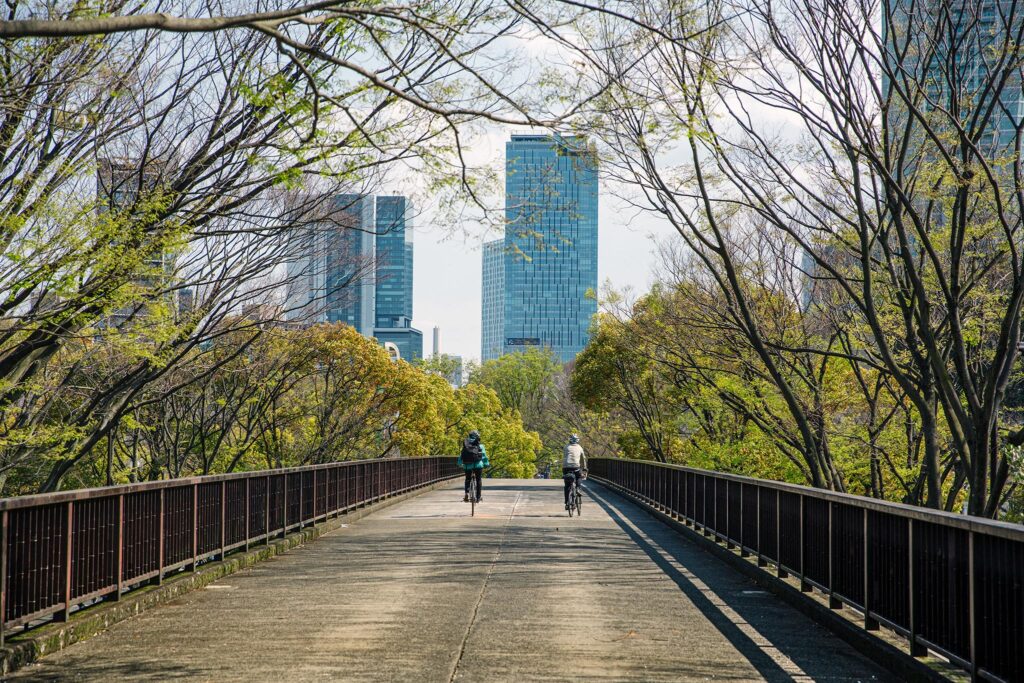
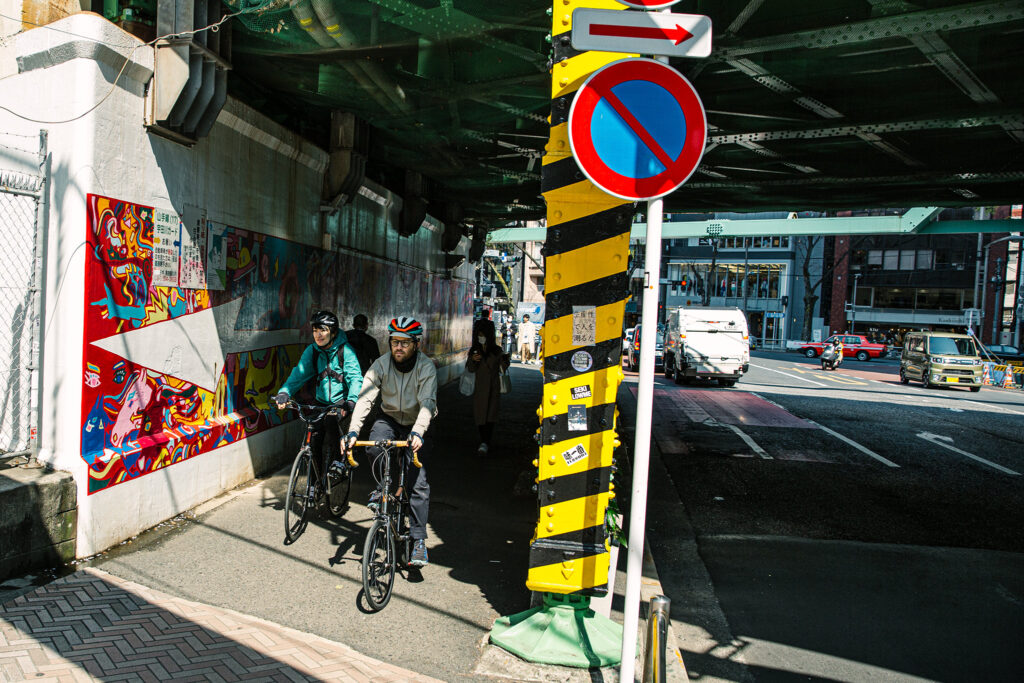
Through the backstreets of Harajuku and Sendagaya we reach the highlight and end of the first two sections of the route, Shinjuku Gyoen, a stunning park situated beneath skyscrapers and home to around 10,000 trees and 140 endangered species. It’s not possible to take bikes inside, so you’ll need to leave them at one of the three entrances, but arriving at golden hour to eat together outside as the sun sets over Tokyo is a magical experience.
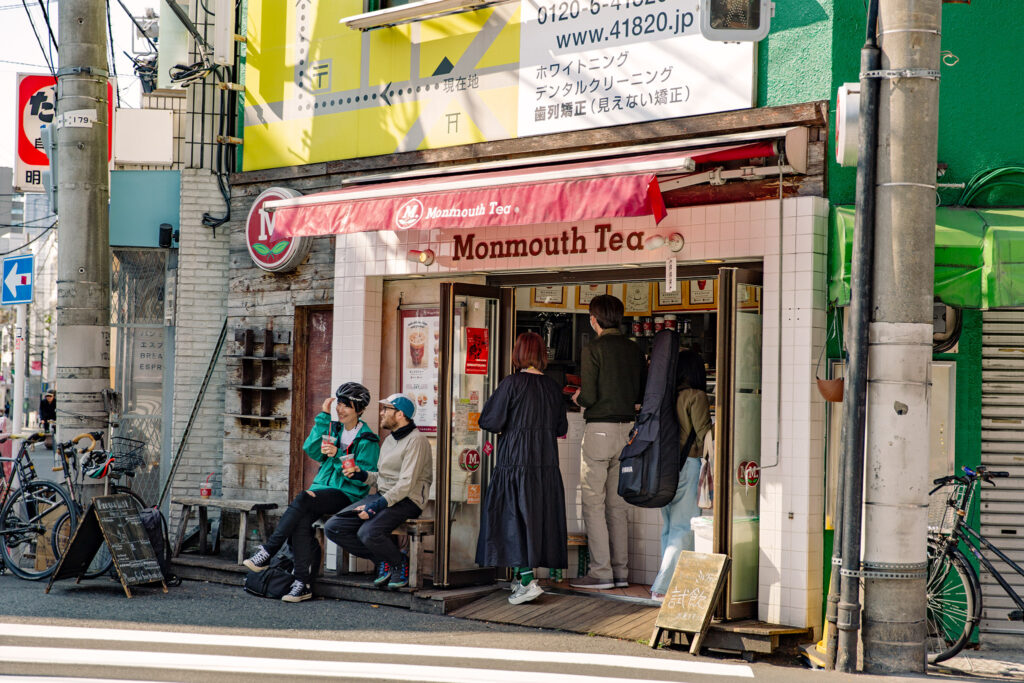
Read about all six sections of the Tokyo Tree Trek:
・Sections 1&2 Kita Shinagawa to Shinjuku Gyoen
・Sections 3&4 Shinjuku Gyoen to Asakusa
・Sections 5&6 Asakusa to Tokyo Imperial Palace
PAPERSKY has created a 60km trail that connects trees in Tokyo. This original route starts from Shinagawa-juku (Kita-Shinagawa), which welcomed travelers as the gateway to Edo (old name for Tokyo), and winds around in a clockwise direction to the Imperial Palace, where Edo Castle once stood.
